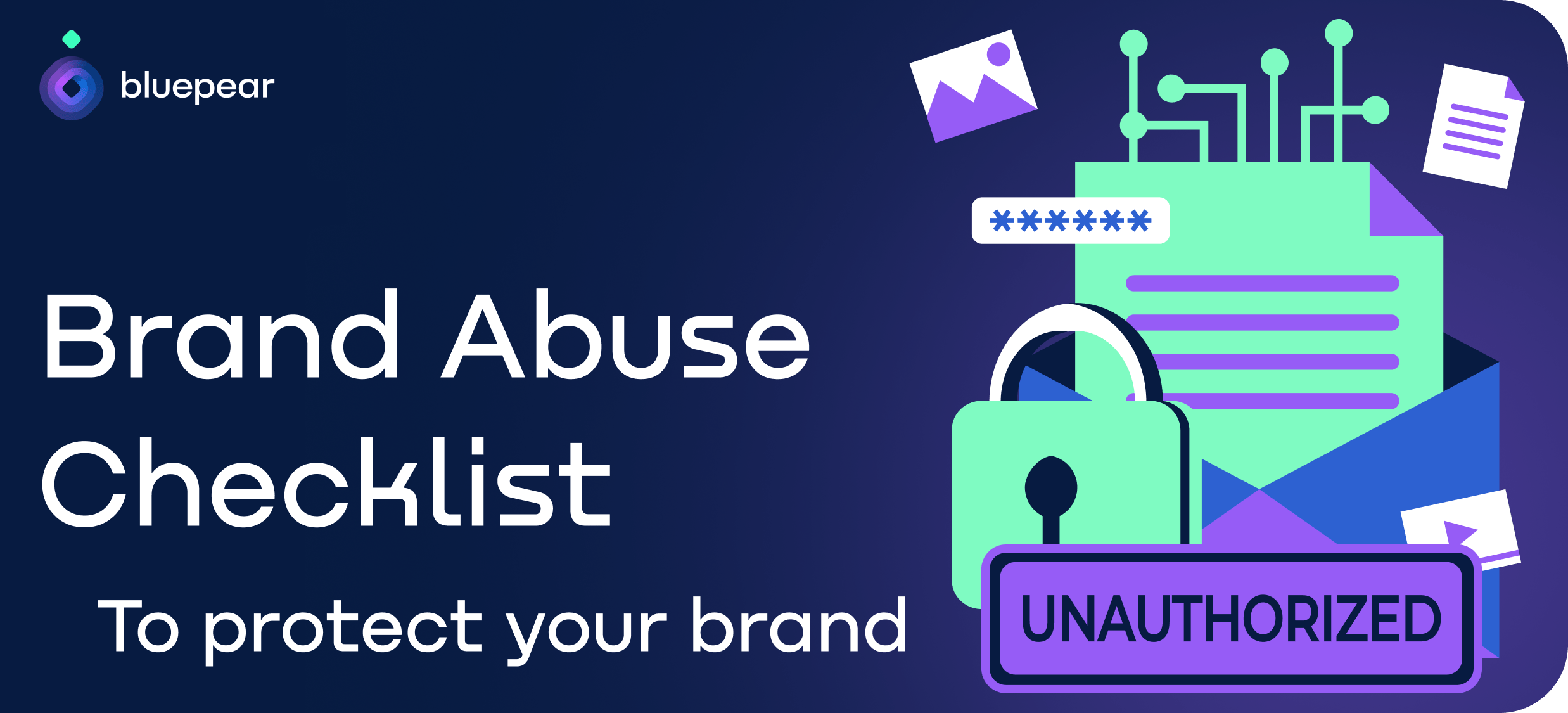
Contents
In today's digital age, brand abuse has emerged as a significant threat affecting businesses across various industries. As companies increasingly rely on their brand reputation to establish a competitive edge, brand abuse poses serious risks to their success and sustainability. This article aims to decode the concept of brand abuse, exploring its definition and dimensions, and highlighting the need for effective brand protection measures to reduce brand abuse.
Defining Brand Abuse
Brand abuse definition refers to the unauthorized and unethical use of a company's brand assets, such as trademarks, logos, or domain names, with the intention to deceive or exploit consumers. It encompasses a range of illicit activities that undermine a brand's integrity, profitability, and customer trust. To combat brand abuse effectively, it is essential to understand its various dimensions.
Dimensions of Brand Abuse
Counterfeiting and Piracy
Counterfeiting and piracy form a significant dimension of brand abuse. Counterfeit products imitate genuine brands, deceiving consumers into purchasing inferior and potentially harmful goods. Piracy involves the unauthorized reproduction and distribution of copyrighted content, including music, movies, and software. Both counterfeiting and piracy not only lead to financial losses for businesses but also undermine consumer trust in a brand's authenticity.
Trademark Infringement
Trademark infringement occurs when a third party uses a brand's protected symbols, names, or logos without permission. This unauthorized use can create confusion among consumers and dilute the uniqueness associated with a brand. Trademark infringement not only damages a brand's reputation but also erodes its market share and can lead to legal issues. To address these, it is crucial to file a brand abuse report highlighting instances of trademark infringement.
Domain Name Squatting
Domain name squatting involves the registration of domain names that closely resemble established brands or trademarks, with the intent to profit from the brand's reputation. Squatters often demand a premium price from the legitimate brand owners to release the domain. This practice not only confuses consumers but also affects a brand's online presence and customer engagement. If you suspect domain name squatting related to your brand, make sure to file a brand abuse report to protect your online reputation and notify relevant authorities.
Interplay Between Brand Abuse and Consumer Behavior
Brand abuse has a direct influence on consumer behavior. When consumers unknowingly encounter counterfeit products or unauthorized brand content, their trust in the brand may be compromised. A negative experience with counterfeit goods can result in lost sales, damage to brand loyalty, and harm to a brand's reputation. Understanding the interplay between brand abuse examples and consumer behavior is crucial for companies to protect their brand equity.
Brand Abuse Across Industries
Technology and Software
The technology and software industry faces brand abuse challenges due to the ease of copying and distributing unauthorized software and digital content. Rampant software piracy not only results in significant revenue losses for companies but also undermines their ability to innovate and invest in new technologies. A robust brand protection strategy is essential for safeguarding intellectual property rights and reducing brand abuse examples within this sector.
Pharmaceutical and Healthcare
The pharmaceutical and healthcare industries are particularly vulnerable to brand abuse due to the sale of counterfeit drugs and medical devices. Counterfeit pharmaceuticals pose severe health risks to consumers, as they may contain harmful substances or lack the necessary therapeutic components. Strict regulations, effective supply chain management, and awareness campaigns are essential to combat brand abuse in this critical sector and protect patient safety.
Legal Frameworks and Brand Protection Measures
To reduce brand abuse, legal frameworks play a pivotal role in enforcing intellectual property rights and combating illicit activities. Companies must understand the legalities surrounding brand abuse examples, including trademark registration, copyright protection, and domain name dispute resolution processes. Implementing brand protection measures, such as regular monitoring, active enforcement, and collaborations with relevant authorities, can help safeguard a brand's assets from abuse.
Emerging Trends in Brand Abuse
The fight against brand abuse is evolving with the emergence of predictive analytics and artificial intelligence (AI). These technological advancements enable companies to proactively identify potential brand abuse threats, monitor online platforms, and detect counterfeit products or trademark infringements. By leveraging predictive analytics and AI, businesses can strengthen their brand protection strategies and mitigate risks effectively. Furthermore, companies can analyze vast amounts of data using these powerful tools to generate insightful brand abuse reports, helping them make informed decisions and take immediate action against offenders.
Ethical Considerations in Brand Protection
While combating brand abuse, it is crucial for businesses to maintain ethical practices. The misuse of legal processes to suppress competition or stifle free speech can harm a brand's image and invite public scrutiny. Balancing the protection of intellectual property rights with ethical considerations and respecting consumer rights is essential in building a sustainable brand protection framework.
To ensure transparency and accountability, businesses should establish a brand abuse reporting system that allows consumers and stakeholders to easily submit brand abuse reports, ensuring timely resolution of any potential fraudulent activities.
Conclusion
Brand abuse presents a multifaceted challenge that requires proactive measures and a comprehensive understanding of its dimensions. Counterfeiting, trademark infringement, and domain name squatting are the primary facets of brand abuse examples that demand attention, including brand bidding. By investing in legal frameworks, innovative technologies, and ethical practices, businesses can reduce brand abuse, protect their brand equity, and safeguard consumer trust. Implementing brand abuse checklists and staying vigilant against emerging threats is vital for companies to thrive in a competitive marketplace.

